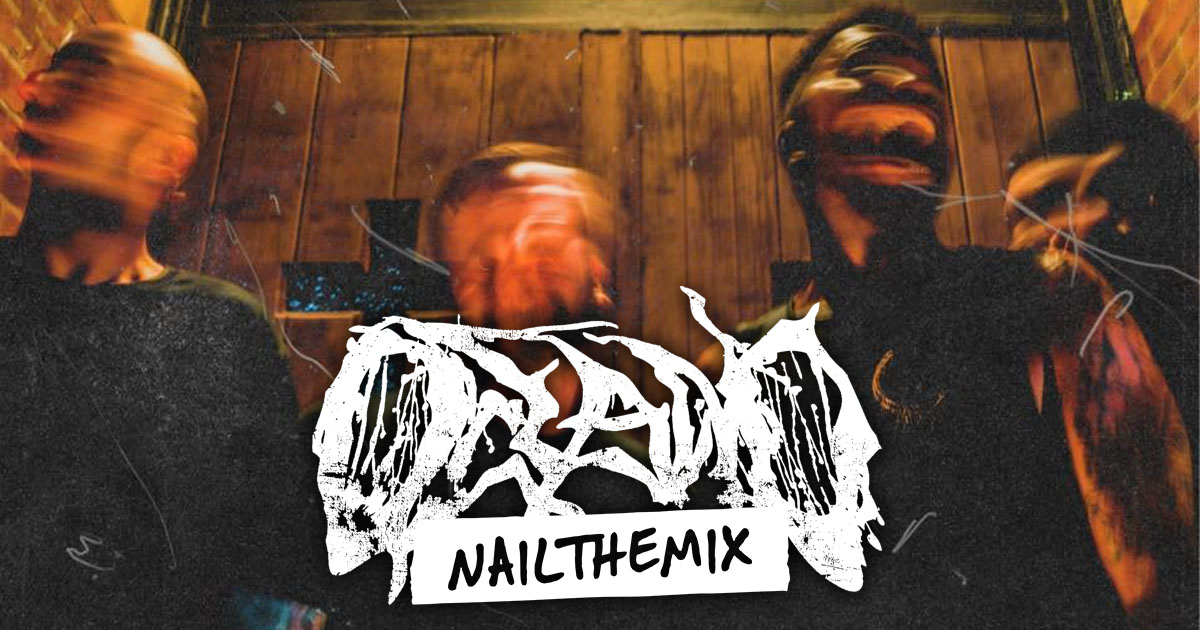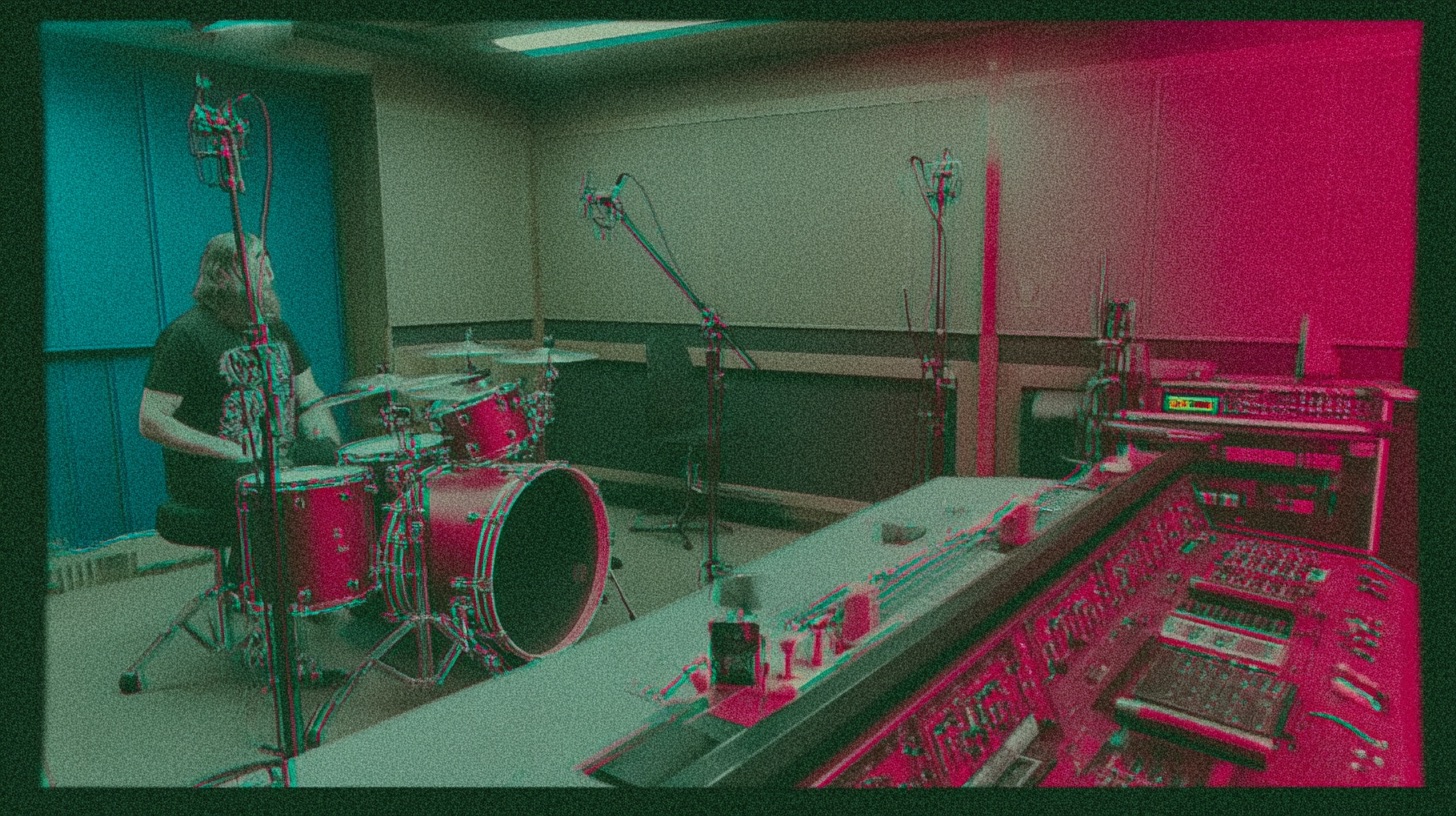
Kyle Black’s Pro Tricks for Mixing State Champs Drums
Nail The Mix Staff
Getting that punchy, energetic, and clean pop-punk drum sound is a massive challenge. You want drums that hit hard and drive the track, but without sounding messy or cluttered. It’s a fine line to walk, and few do it better than producer Kyle Black on records like State Champs’ The Finer Things. That album is a benchmark for modern pop-punk production, with drums that are powerful yet polished.
Luckily, we got a front-row seat to see how Kyle Black tackles these exact challenges in his Nail The Mix session for State Champs. Forget broad strokes; the difference between a good mix and a pro mix is in the small, deliberate details. Let’s break down a few of Kyle’s go-to moves for getting those world-class drum sounds.
Taming That Pesky Snare Bleed
You know the sound. That high-frequency, almost-painful “tssss” of hi-hats and cymbals bleeding into the snare mic. In a dense, fast pop-punk track, this can quickly make the entire mix feel harsh and amateurish. In fact, it’s one of those little things that can make or break a mix.
It might seem impossible to eliminate completely, but you can definitely get it under control. While your first instinct might be to reach for a gate or EQ, Kyle’s first move is somewhere else entirely.
Check Your Parallel Compression First
If you’re using parallel compression to add weight and punch to your drums, chances are it’s the main culprit for exaggerating that nasty bleed. Squeezing the drum bus brings up all the quiet details—including the cymbal wash in your snare mic.
Instead of trying to fix the problem after the compressor, Kyle’s solution is to address it at the source. He found that the send from his top snare mic to the parallel compression bus was just too hot. By simply backing off the top snare send a little bit, he dramatically reduced the harsh bleed without sacrificing the punch of the snare itself. It’s a simple, elegant fix that attacks the root of the problem.
Injecting Snap and Crack into the Kick Drum
Once the bleed is under control, it’s time to make sure the individual drums have the right character. A common goal in pop-punk is a kick drum that’s not just thuddy, but has an audible, snappy attack that cuts through the wall of guitars.
Kyle’s approach involves treating the shell mic and the kick sample as a team, enhancing both to achieve one cohesive sound.
Strategic Compression and EQ
First, to make the kick “bite” a little harder, he adds a bit more compression. This isn’t about just lowering the dynamic range, but shaping the transient to be more aggressive and in-your-face. Mastering the art of using an audio compressor is crucial for getting that modern punch.
Next, he turns to EQ. On both the live kick mic and the kick sample, he adds a significant high-frequency boost. This is what brings out that “click” or “snap” of the beater hitting the drumhead. For the sample, he might use a bell curve to dial in the perfect frequency, ensuring the attack is present without sounding thin or unnatural. This is a classic example of using targeted kick drum EQ to help an element find its place in the mix.
Giving Cymbals Space with Room Mics
Sometimes, in the quest for a tight and punchy drum sound, you can go too far and make the kit sound small and lifeless. Close mics are great for impact, but they don’t capture the sound of a real drum kit pushing air in a room, which is why understanding room tone is so important. Kyle noticed his cymbals were sounding a bit small and one-dimensional.
His solution was simple: bring up the room mics. By blending in more of the room sound, the cymbals instantly gained size and a pleasant “washy” character that helped them sit better in the mix. It makes the whole kit feel more three-dimensional and real. This is also a great example of reactive mixing; Kyle noticed the room mics themselves sounded a bit dull, so he didn’t hesitate to adjust the EQ on the room bus to brighten them up before blending them in.
Controlling Snare Ring with Smart Gating
A raw snare drum often has a natural ring or sustain that can be cool on its own, but can easily clutter up a fast, busy mix. The goal isn’t to kill the snare’s tone, but to control its decay so it gets out of the way before the next hit. This is where a noise gate comes in, but not in the way you might think.
The Power of the Range Control
Many producers set a gate’s threshold and call it a day, resulting in that choppy, unnatural “all-or-nothing” sound. Kyle showcases a much more powerful and musical approach by mastering the Range control on his gate.
Here’s the process:
- Set the Threshold and Attack: Dial in the gate so it opens reliably on every snare hit.
- Adjust the Release: Tune the release time to control the length of the snare’s sustain. This is where you decide how much of the “body” of the snare you want to keep.
- Use the Range Knob: This is the magic step. Instead of letting the gate close to complete silence, the range control determines how much it closes. By dialing back the range, you can let a little bit of the natural ring and bleed through. It’s like having a volume fader on the tail of your snare.
The result is a snare that is perfectly controlled and tight, but still sounds natural and retains its character. It’s the best of both worlds, and a technique other top pop-punk producers use in different ways, like Sam Pura’s tempo-synced kick and snare gates.
Want to Learn More?
These techniques for taming bleed, shaping transients, and controlling sustain are the building blocks of a professional drum mix. Seeing how a producer like Kyle Black applies them in real-time, on a real hit record, is a total game-changer. These are the details that separate an okay mix from a radio-ready one.
State Champs on Nail The Mix
Kyle Black mixes "Secrets"
Get the Session
If you want to go beyond reading tips and actually see how the pros do it, Nail The Mix is your all-access pass. Every month, we give you the raw multi-tracks from a massive song and let you watch the original producer mix it from scratch, explaining every plugin, every fader move, and every decision along the way.
You can learn all these techniques and more by grabbing Kyle Black’s full State Champs mixing session right now. And if you’re ready to truly transform your productions from presets to pro, check out our intensive courses. Stop guessing and start learning from the best in the business.
Get a new set of multi-tracks every month from a world-class artist, a livestream with the producer who mixed it, 100+ tutorials, our exclusive plugins and more
Get Started for $1






